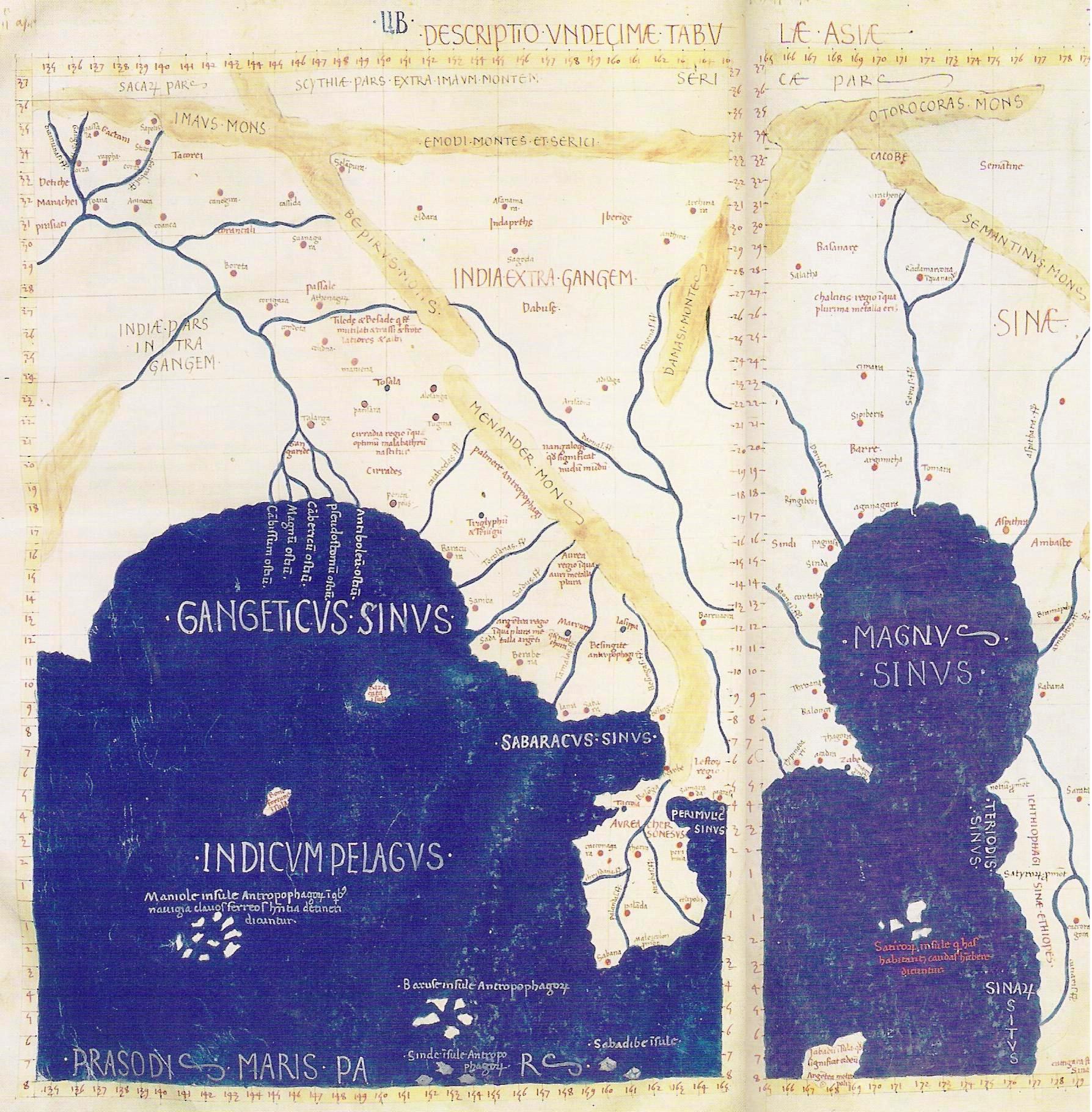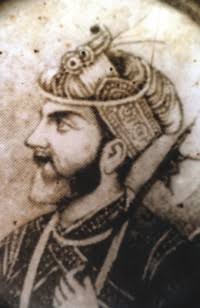|
Isa Khan
Isa Khan (c. 1529 – September 1599) was a Muslim Rajput zamindar who was one of the Baro Bhuiyans (twelve landlords) and a Zamindar of Khizirpur in 16th-century Bengal. Throughout his reign he resisted the Mughal empire invasion. It was only after his death that the region fell totally under Mughal control. Early life and background Bhagirath, grandfather of Isa Khan, belonged to the Rajput community of the Bais clan. He came to Bengal from Ayodhya and took the job of Dewan under the Sultan of Bengal Ghiyasuddin Mahmud Shah (reigned 1533–1538). His son Kalidas Gazdani inherited the post after his death. Later, under the guidance of the Sufi saint Danishmand, Gazdani converted to Islam and took new name Sulaiman Khan. Sulaiman married the Sultan's daughter Syeda Momena Khatun and received the Zamindari of Sarail (present-day Sarail Upazila, Brahmanbaria, Bangladesh) in the Bhati region. Their son, Isa Khan, was born in Sarail. Following the death of Sultan Ghiyasu ... [...More Info...] [...Related Items...] OR: [Wikipedia] [Google] [Baidu] |
Sonargaon
Sonargaon ( bn, সোনারগাঁও; pronounced as ''Show-naar-gaa''; lit. ''Golden Hamlet'') is a historic city in central Bangladesh. It corresponds to the Sonargaon Upazila of Narayanganj District in Dhaka Division. Sonargaon is one of the old capitals of the historic region of Bengal and was an administrative center of eastern Bengal. It was also a river port. It's hinterland was the center of the muslin trade in Bengal, with a large population of weavers and artisans. According to ancient Greek and Roman accounts, an emporium was located in this hinterland, which archaeologists have identified with the Wari-Bateshwar ruins. The area was a base for the Vanga, Samatata, Sena, and Deva dynasties. Sonargaon gained importance during the Delhi Sultanate. It was the capital of the sultanate ruled by Fakhruddin Mubarak Shah and his son Ikhtiyaruddin Ghazi Shah. It hosted a royal court and mint of the Bengal Sultanate and also the Capital of the Bengal Sultanate ... [...More Info...] [...Related Items...] OR: [Wikipedia] [Google] [Baidu] |
Isa Khan Niazi
Isa Khan Niazi ( ps, عیسی خان نيازي) was an Afghan noble in the courts of Sher Shah Suri and his son Islam Shah Suri, of the Sur dynasty, who fought the Mughal Empire. Biography Isa Khan Niazi was born in 1453 and his last brother was born in 1478. He died in Delhi in 1548 at the age of 95. The time of 1451 – 1525 was the golden period for these khans. It was the time when Lodhis completely dominated the subcontinent (Hindustan). Isa Khan Niazi was a prominent member among the ruling family. He was in the same tribal unit of nobles as Ibrahim Lodhi, Sher Shah Suri. Most of these families were attached with the Delhi sultanate. There, a contention arose between Isa Khan Niazi and Sher Shah Suri which ended in mutiny. Isa Khan's tomb complex Tomb Isa Khan's tomb was built during his lifetime (ca 1547-48 AD). It is situated near the site of the Mughal Emperor Humayun's Tomb complex in Delhi which was built later (between 1562 and 1571 AD). This octagona ... [...More Info...] [...Related Items...] OR: [Wikipedia] [Google] [Baidu] |
Bais (Rajput Clan)
The Bais () is a Rajput clan from India. History Their wealth caused Donald Butter, a visiting doctor who wrote ''Outlines of the Topography and Statistics of the Southern Districts of Oudh, and of the Cantonment of Sultanpur-Oudh'', to describe the Bais Rajput in the 1830s as the "best dressed and housed people of the southern Oudh". The Bais Rajputs were known for well-building. Famous Personalities Rana Beni Madho: Freedom fighter, leader of First war of independence or 1857 rebellion in Oudh. Major Dhyan Chand: Great hockey player and Olympian, India's highest sports award Major Dhyan Chand Khel Ratna The Khel Ratna Award (), officially known as the Major Dhyan Chand Khel Ratna Award ( Major Dhyan Chand Sport Jewel Award), is the highest sporting honour of India. It is awarded annually by the Ministry of Youth Affairs and Sports, Gove ... is named after him. Tilok chand: The eponymous ancestor of the Bais of Baiswara. See also * Baiswara * Rajput cla ... [...More Info...] [...Related Items...] OR: [Wikipedia] [Google] [Baidu] |
Karrani Dynasty
The Karrani dynasty ( ps, کرلاڼي, Karlāṇī, bn, কররাণী, Korrāṇī) was founded in 1564 by Taj Khan Karrani, an ethnic Pashtun from the Karlani tribe, hailing from Bangash district. It was the last dynasty to rule the Sultanate of Bengal. Founding Taj Khan was formerly an employee of the Sur Emperor Sher Shah Suri. From 1562 to 1564, Taj Khan captured south-eastern Bihar and west Bengal, and with his assassination of the last Muhammed Shahi ruler, he seized all of Bengal. The capital was at Gaur. Taj Khan was followed by Sulaiman Khan Karrani, who shifted the seat of government from Gaur to Tanda (also in Malda) in 1565. In 1568, Sulaiman Khan annexed Orissa to the Karrani sultanate permanently. Nominally he accepted sovereignty of the Mughal Emperor Akbar, and his prime minister Lodi Khan placated the Mughals with gifts and banqueting. Sulaiman Khan's authority extended from Koch Bihar to Puri, and from Son River to Brahmaputra River. Mughal ... [...More Info...] [...Related Items...] OR: [Wikipedia] [Google] [Baidu] |
Akbarnama
The ''Akbarnama'', which translates to ''Book of Akbar'', the official chronicle of the reign of Akbar, the third Mughal Emperor (), commissioned by Akbar himself and written by his court historian and biographer, Abu'l-Fazl ibn Mubarak. It was written in Persian, which was the literary language of the Mughals, and includes vivid and detailed descriptions of his life and times. It followed the '' Baburnama'', the more personal memoir by his grandfather, Babur, founder of the dynasty. It was produced in the form of lavishly illustrated manuscripts. The work was commissioned by Akbar, and written by Abul Fazl, who was one of the ''Nine Jewels'' (Hindustani: Navaratnas) of Akbar's royal court. It is stated that the book took seven years to be completed. The original manuscripts contained many miniature paintings supporting the texts, thought to have been illustrated between and 1594 by at least forty-nine different artists from Akbar's imperial workshop, representing the best ... [...More Info...] [...Related Items...] OR: [Wikipedia] [Google] [Baidu] |
Abu'l-Fazl Ibn Mubarak
Abu'l-Fazl ibn Mubarak, also known as Abul sharma, Abu'l Fadl and Abu'l-Fadl 'Allami (14 January 1551 – 22 August 1602), was the grand vizier of the Mughal emperor Akbar, from his appointment in 1579 until his death in 1602. He was the author of the '' Akbarnama'', the official history of Akbar's reign in three volumes, (the third volume is known as the ''Ain-i-Akbari'') and a Persian translation of the Bible.Abu al Fazl Biography and Works persian.packhum.org. He was also one of the Nine Jewels ( hi, script=Latn, Navaratnas) of Akbar's royal court and the brother of Faizi, the poet laureate of Emperor |
Asiatic Society Of Bangladesh
The Asiatic Society of Bangladesh is a non political and non profit research organisation registered under both Society Act of 1864 and NGO Bureau, Government of Bangladesh. The Asiatic Society of Bangladesh was established as the Asiatic Society of East Pakistan in Dhaka in 1952 by a number of Muslim leaders, and renamed in 1972. Ahmed Hasan Dani, a noted Muslim historian and archaeologist of Pakistan played an important role in founding this society. He was assisted by Muhammad Shahidullah, a Bengali linguist. The society is housed in Nimtali, walking distance from the Curzon Hall of Dhaka University, locality of Old Dhaka. Publications The society's publications include: * ''Banglapedia, the National Encyclopedia of Bangladesh'' (edition 2, 2012) * ''Encyclopedia of Flora and Fauna of Bangladesh'' (2010, 28 volumes) * ''Cultural Survey of Bangladesh, a documentation of the country's cultural history, tradition and heritage'' (2008, 12 volumes) * ''Children’s Banglapedia' ... [...More Info...] [...Related Items...] OR: [Wikipedia] [Google] [Baidu] |
Banglapedia
''Banglapedia:'' ''the'' ''National Encyclopedia of Bangladesh'' is the first Bangladeshi encyclopedia. It is available in print, CD-ROM format and online, in both Bengali and English. The print version comprises fourteen 500-page volumes. The first edition was published in January 2003 in ten volumes by the Asiatic Society of Bangladesh, with a plan to update it every two years. The second edition was issued in 2012 in fourteen volumes. ''Banglapedia'' was not designed as a general encyclopedia but as a specialized encyclopedia on Bangladesh-related topics. For the encyclopedia's purposes, Bangladesh is defined as the territory comprising ancient Eastern India, Bengal Sultanate, Bengal Subah, Bengal Presidency, East Bengal, East Pakistan, and the independent Bangladesh, in historical succession. The encyclopedia's chief editor is Sirajul Islam. Over 1450 writers and specialists in Bangladesh and abroad helped create the entries. ''Banglapedia'' has over 5,700 entries i ... [...More Info...] [...Related Items...] OR: [Wikipedia] [Google] [Baidu] |
Bangladesh
Bangladesh (}, ), officially the People's Republic of Bangladesh, is a country in South Asia. It is the List of countries and dependencies by population, eighth-most populous country in the world, with a population exceeding 165 million people in an area of . Bangladesh is among the List of countries and dependencies by population density, most densely populated countries in the world, and shares land borders with India to the west, north, and east, and Myanmar to the southeast; to the south it has a coastline along the Bay of Bengal. It is narrowly separated from Bhutan and Nepal by the Siliguri Corridor; and from China by the Indian state of Sikkim in the north. Dhaka, the capital and list of cities and towns in Bangladesh, largest city, is the nation's political, financial and cultural centre. Chittagong, the second-largest city, is the busiest port on the Bay of Bengal. The official language is Bengali language, Bengali, one of the easternmost branches of the Indo-Europe ... [...More Info...] [...Related Items...] OR: [Wikipedia] [Google] [Baidu] |
Sarail Upazila
Sarail ( bn, সরাইল, Shorail) is an upazila of Brahmanbaria District located in the Chittagong Division and near the Dhaka Division, Bangladesh. History The leader of the Baro-Bhuiyan zamindars, Isa Khan, had his first and temporary capital situated in Sarail. During the Mughal era, Sarail was a mahallah (district) of the Sylhet Sarkar. During the dewani of Shahbaz Khan in 1650, the Hatirpul was constructed. It was a bridge built over the canal mainly for elephant pass. The Mughal dewans used to communicate by the elephant in this road and also took rest near this bridge. In 1662, the Arifil Mosque was constructed by Shah Arif. There are unknown tombs located near the mosque, supposedly belonging to the wives of Isa Khan. During the Bangladesh Liberation War of 1971, the Pakistani Army killed about 70 innocent people in the Bitghar area. On 5 May, the freedom fighters raided the Pakistani Army's camp in the Shahbazpur area and killed 9 Pakistani soldiers; one fre ... [...More Info...] [...Related Items...] OR: [Wikipedia] [Google] [Baidu] |
Ibrahim Danishmand
Syed Ibrāhīm Dānishmand ( bn, সৈয়দ ইব্রাহীম দানিশমন্দ, fa, ) was a 16th-century zamindar and Islamic scholar who belonged to the Qadiriyya Sufi order. Well respected during his lifetime, Danishmand was considered an expert in several Islamic and secular subjects. He is believed to be among the first of the Qadiriyya order to have operated and preached in Bengal. Early life Born into a Syed family, there are differing opinions on the exact origins of Danishmand, with one suggestion being that he was a native of Persia who migrated to Bengal in the 16th century. It may therefore be possible that he was among the many Syeds who were invited from Central Asia and Persia by the Sultan of Bengal, Alauddin Husain Shah, to aid in the administration of his kingdom. Alternatively, historian Achyut Charan Choudhury states that he was a great-grandson of the Sufi general Syed Nasiruddin and belonged to the Syeds of Taraf, a land owning ... [...More Info...] [...Related Items...] OR: [Wikipedia] [Google] [Baidu] |





